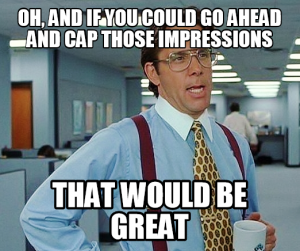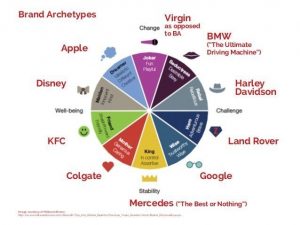— April 23, 2019
In today’s competitive market, the fight for top talent can feel like a battle straight out of Game of Thrones. Each competitor for the Iron Throne could tell you that the size of your army just doesn’t matter. Similarly, increasing the number of people on your team is no longer enough to get ahead.
Maybe you have the resources of House Lannister and can offer attractive wages to your candidates. Or perhaps you provide great benefits and inspire loyalty and dedication in your recruiters like House Stark. You might even have that secret weapon that sets you apart from everyone else – like the dragons of House Targaryen. How will you defeat the competition and win the staffing battle?
Staying ahead of your competitors means optimizing your recruiting strategy in order to reduce time-to-hire, improve the candidate experience, and elevate your company’s brand. This will help you come out on top in the fight for talent and ensure you’re attracting and retaining quality employees that will move your business forward.
The Current Hiring Landscape
The news is good for candidates entering the job market, but not so much for recruiters. The United States is experiencing its lowest unemployment rates in nearly 20 years. Conversely, the average time-to-hire has been climbing since 2009. This, coupled with a shortage of qualified candidates, is indicative of the recruiting challenges facing every business.
Candidates can afford to be choosy, but it’s costing recruiters big time. Companies are shelling out thousands of dollars to fill each open position, with an average time to hire of 52 days. In order to minimize costs, recruiters are looking to streamline the hiring process and find creative ways to court qualified applicants who already have plenty of options. However, this strategy isn’t economically sustainable. Something has to change.
Stress Testing Your Hiring Strategy
There’s a common adage that goes, “if it ain’t broke, don’t fix it.” But operating under the mentality that legacy processes are optimal is a surefire way to fail at adapting to the future of recruitment. After all, even if the reigning families of Westeros had never met in battle, they would still be faced with the undead “White Walkers” descending on their kingdoms, forcing them to adapt – or die. Similarly, companies need to evolve across all functional areas in order to survive.
Another adage is even more appropriate: “the definition of insanity is doing the same thing over and over again, and expecting different results.” Responding to emerging trends in the job market requires an acceptance that certain parts of your hiring strategy may be “broken.” Figuring out what those parts are calls for careful testing and measurement.
The best way to test out the efficacy of your hiring strategy is to see it in practice. That said, you’re going to want to set some parameters to ensure you’re making the most of your recruiting budget.
Take a Bird’s Eye View of Hiring Operations
Bottlenecks in productivity and gaps in processes can greatly impede your team’s ability to make agile hiring decisions. The mission-critical question should be, “Where can I create operational efficiencies?”
A high-level hiring strategy should first give your team access to the tools that can help identify skills gaps and forecast hiring needs. Leveraging emerging tools like HCM software aids in applicant tracking and performance management, expediting onboarding through the use of automation and data analytics.
Your team can use this data to identify what’s working well, what isn’t, and how to leverage software tools to project future outcomes.
Set Measurable Goals
Analyzing aggregate data can be a time-consuming task for marketers and HR professionals alike, but it’s a crucial part of optimizing your hiring strategy. Set goals that can be corroborated with hard statistics from digital tools or qualitative processes you use. Beyond the typical recruiting metrics and ratios, there are two key statistics that determine the success of your hiring process:
Time to Hire
If your company wants to hire faster than the current 50-day average, you will have to use a data-driven strategy. Take a look at:
- The time it currently takes you to fill a role, versus the industry standard.
- The time it takes candidates to move through each stage of the hiring process
- The ratio of qualified applicants versus discarded applications (e.g., identify whether the bottleneck happens at the sourcing level or the hiring level).
There’s nothing more frustrating for a candidate than being asked to interview immediately and then waiting an inordinate period of time to be made an offer. On the other side of the table, the cost a company incurs when a position sits open that long can be detrimental. Identifying these process gaps can keep top talent from looking elsewhere.
Candidate Experience
Talent acquisition mirrors customer experience. Job candidates interact with their peers and with brands online, and word travels fast. The last thing you want is a pervasive negative experience that will dictate the talent that applies to vacancies at your company.
Many hiring teams are using the Net Promoter Score (NPS) to calculate overall candidate experience. Originally intended to gauge customer loyalty, recruiters can measure NPS by sending out a survey which simply asks, “On a scale from 1-10, how likely are you to recommend {{company name}} to a friend or peer?” Respondents that give a score between 9 and 10 are considered “promoters,” 1-6 “detractors”, and 7-8 are classified as “passive”. From there, your team can calculate the NPS score by simply subtracting the percentage of promoters from the percentage of detractors.
NPS helps recruiters gauge a baseline impression of overall sentiment toward their brand. This can help measure how well your recruiting initiatives are paying off over time. Adding a brief survey to the end of the hiring process is a minimal output of effort for the number of valuable insights that can be gleaned.
Double Down on Recruitment Marketing
Are your employees acting as brand advocates? Is your employer brand being leveraged appropriately across prime social channels like LinkedIn, Twitter, and Glassdoor? Recruitment marketing has emerged as one of the leading ways to establish brand resonance among candidates.
Nearly 80 percent of job seekers are leveraging social media during the job search. Savvy recruiters know these channels are incredibly powerful in sourcing qualified candidates.
Takeaways
To come out on top in the fight for talent, it’s time to move away from traditional battle plans and adapt to the future of recruiting. This means thinking more like data scientists and marketers and using measurable goals and feedback to improve your operations. Testing your hiring strategy now using a holistic blend of digital tools and standardized processes will help your hiring team be more effective in the future. With an improved hiring strategy, your company can win the war for quality candidates in an increasingly competitive field. No dragons required.
Business & Finance Articles on Business 2 Community
(54)




